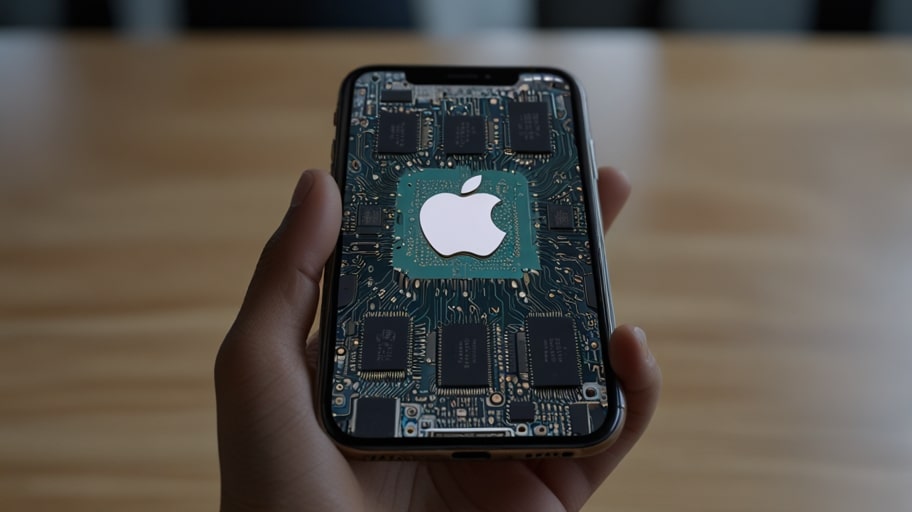NVIDIA was founded back in 1993 as a graphics card pioneer. Initially, their GPUs were the revolution in gaming, but today, NVIDIA reigns supreme in artificial intelligence. Its technology, which is used in data centers, self-driving cars, and various robotics, disrupts industries and gets NVIDIA the title of the tech giant.
Jensen Huang: The Visionary Leader
Jensen Huang, the CEO, is credited with NVIDIA’s rapid growth. His bold move in accepting AI and deep learning as the company’s future was the turning point. Especially known for his presentations with leather jackets on and that are very abound, Jenson Huang is the man who makes NVIDIA the choice no. 1, although he can occasionally display a sharpness in his style that elicits criticisms from members of the team.
GPUs: The Innovation Engine
NVIDIA’s GPUs are the de facto industry standard of graphic processing units (GPUs). Instead of sticking only to gaming, GPUs today are known to quicken the pace of AI model training too. A product of 2022, the H100 chip serves the generative AI function in recognizing and handling super-large and complex datasets. Outperforming its rivals from the performance aspect, NVIDIA is in pole position in the AI race in technology.
The AI and Data Center Revolution
In terms of the revenues generated, the virtualization of NVIDIA’s data center business even surpasses that of gaming, which has been quite popular for them. Cloud giants, e.g. AWS and Google, are the main consumers of the A100 and H100 chips for AI-driven workloads. This transition which is facilitated by the rapid growth of ChatGPT makes NVIDIA take the lead in AI-driven digital economy.
The Development of the Automotive Sector
NVIDIA’s DRIVE platform is the platform that empowers the autonomous vehicles. Tesla, Mercedes-Benz, and Volvo all are cooperating with NVIDIA in getting the latter’s chips into their fully automatic vehicles. The Orin chip enables cars to process real-life data thus reducing the risk of dangerous accidents. Nevertheless, NVIDIA’s automotive ambitions are facing regulatory challenges and there is intense competition from Intel’s Mobileye.
Financial Power and Market Upsets
NVIDIA skyrocketed on the stock market and to be precise even hit a $3 trillion capitalization only for a short time in 2024. The most significant driver of the sales, however, was the AI development with data center sales taking the lead. Nevertheless, the fluctuations in the market which were driven by the AI buzz and not to forget the supply chain disruptions are also major threats. The investors’ opinions are bullish, and they are clearly predicting that NVIDIA will dominate the market for a long time to come.
Gaming Tradition and GeForce Now
The company is still a leading player in gaming. NVIDIA’s cards, like GeForce RTX, can render photorealistic effects through ray tracing technology. GeForce Now, a cloud gaming service, allows the user to stream high-end games directly from the server to low-end devices. The company’s GPU expertise gives it an edge in gaming’s evolution, as it increasingly competes with platforms such as Sony and Microsoft.
Medical Solutions and AI Leadership
NVIDIA’s healthcare AI accelerator, the Clara platform, is the driving force behind the AI revolution in healthcare. This innovation has transformed the field of medical imaging, drug development, and genomics. The tie-ups with health centers and biotech firms facilitate the treatment that is focused on the person, a process termed as precision medicine. However, moral and data privacy issues and regulations are some of the barriers. However, with NVIDIA at the helm of the health sector, the industry is characterized by breakthroughs in the medical field because of the application of AI.
Virtual World and Omniverse Visions
Omniverse by NVIDIA concentrates on the metaverse and brings 3D collaboration to life for the creators. Favored in creating new buildings and the film industry, the technology is merging artificial intelligence with real-time drawing. While metaverse is apparently a new trend and is being pursued by the Mark Zuckerberg Company and the iPhone company, NVIDIA is more concerned about enterprises and seems to be lagging behind them due to the achievements still dominated by AI.
Startup in the Emergency Room (Subscription required)
Still continuing on the chip shortage, NVIDIA is one of the companies that is trapped. An increase in demand for GPUs exceeds the supply which in turn leads to delayed deliveries. A situation where the imports from China are cut because the US implements restrictions on business with China has become even more precarious. NVIDIA, however, has seized the opportunity to find other manufacturing alternatives yet it is necessary to solve the problem of supply disruptions in order to ensure the company’s growth.
Competition Heating Up
AMD and Intel are challenging NVIDIA’s market leadership in the GPU sector. AMD’s Instinct chips and Intel’s Gaudi AI accelerators are battling for the market share in the data center. Cloud service providers, who are putting their money in making their chips, are also chasing after NVIDIA, which may lead to decreased margins. Leading the market requires constant innovations and cooperation with strategically chosen partners.
Sustainability and Criticism
NVIDIA advertises energy-efficient GPUs to reduce data center emissions. DGX systems are there to optimize power consumption for AI training. The environmental impact of chip production and AI’s energy draw is still in the critics’ hands. All said and done, NVIDIA, in between the lines, is primarily an enterprise of green tech, but this doesn’t go unnoticed.
Workforce and Culture
NVIDIA has a work environment that is very open to new ideas and innovation. The campus in Silicon Valley of NVIDIA is designed for voices to be respected and people to collaborate, but the working under pressure triggers some burnout problems too. Attempts to promote diverse employee representation aim at the reduction of the gender cap in tech. Unlike the turbulent conditions at Tesla, NVIDIA maintains a more stable atmosphere, though it is still vital to keep the staff so they stay.
Global Reach and Challenges
NVIDIA is present in more than thirty countries, and Asia significantly contributes to its revenue. Now that the Chinese market, previously a high-growth area, is suffering from export restrictions. In contrast, Europe and India offer potential business expansion. To stay competitive, NVIDIA must be flexible in the face of tough trade policies and local regulations in a fractured global market.
Software Ecosystem Advantage
By depending on the CUDA platform, a lot of developers become tied to the NVIDIA ecosystem. I believe, this bond between the two also reinforces the company’s position in the AI sector. The opposition from the open-source community that develops the same kind of software is not weak, however, the fact that CUDA is a well-established brand, with a good acceptance from the developers, cannot be denied they have a strong lock on the niche.
The Future of NVIDIA
AI’s full potential will set the tone for NVIDIA’s future. Extending in healthcare, automotive, and metaverse markets the right way and also balancing GPU supremacy are vital. The company faces challenges from competitors and scarcity but the vision of Mr. Huang and the innovation pipeline of NVIDIA have brought it to a place where it is able to be the forerunner of technology for the next decade.




